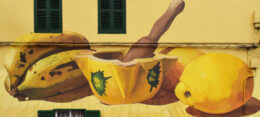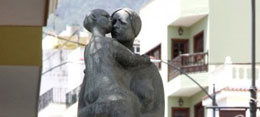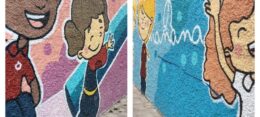Araucaria bidwillii (bunya pine). Belongs to the family Araucariaceae
The buya pine originates from Queensland, Australia, in concrete from the woods to the
south east of Queensland; it is a physically impressive tree with great cultural importance.
Despite its name, it is not related to pine trees. It is a very old tree that looks primitive. It has provided food to the aborigines, who call it “bon-vi”, for millennia. When the cones were harvested, the aborigines travelled long distances to gather and use them in ritual
ceremonies, hunting and all sorts of celebrations, each tribe possessing their own set of
trees. They made grooves in the trunks so that they could climb them. The cones were
broken against the ground; the young fruit was eaten raw while the ripe ones were toasted.
The shells opened in the fire and the seeds were ground wit the food that was baked into a
sort of cake that could last for several weeks. The buya pine is also appreciated for its wood.
No other tree of the family produces bigger cones. It is a coniferous tree. It is tall and wide,
sometimes up to 40 metres high, with a dome shaped, round canopy and characteristic
branch growth.
The trunk can be 1 to 1,2 metres wide. During growth it looses some of its lower branches,
leaving the trunk bare.
It has two types of perennial leaves.
They form vertical, candle shaped flowers tat change colour from light green to brown or
yellow when the stamens begin producing a lot of pollen. Pollination by wind.
They produce very large cones high up, a long away from the ground. These cones are bright green in colour. They can measure up to 30 centimetres long and 25 centimetres wide and
weigh between 5 and 8 kilos. They are very scaly.
These cones take 2 to 3 years to ripen and fall off the tree. The seeds can be eaten raw when young, although they are often toasted with butter and salt and eaten like chestnuts. Along with other dried nuts they are used in different dishes such as soups, pastry, vegetables, in desserts, biscuits, pasta or cereals. Among others they can be ground and used in cakes or
bread.
- ¿Dónde está?
- ¿Qué hay alrededor?
- Artículos relacionados











